How to Compost in Indoor: Beginners Guide
- February 27, 2024
- 0 comment
Composting is an eco-friendly way to recycle kitchen scraps and other organic materials into nutrient-rich soil. It’s not only for those with backyard gardens but also entirely possible and beneficial for apartment dwellers. This guide will walk you through the essentials of composting within the confines of an apartment, ensuring you contribute to the environment while keeping your living space clean and odor-free.
Indoor Compost
Indoor composting offers an eco-friendly solution for apartment dwellers to contribute to sustainability by reducing waste and enriching soil, despite space constraints. Adopting a worm compost system in a tightly sealed container allows for a resourceful and odor-free method to manage organic waste. This approach involves layering soil, cardboard, and kitchen scraps, then introducing worms to create a healthy composting ecosystem, emphasizing the importance of patience and observation in the process.
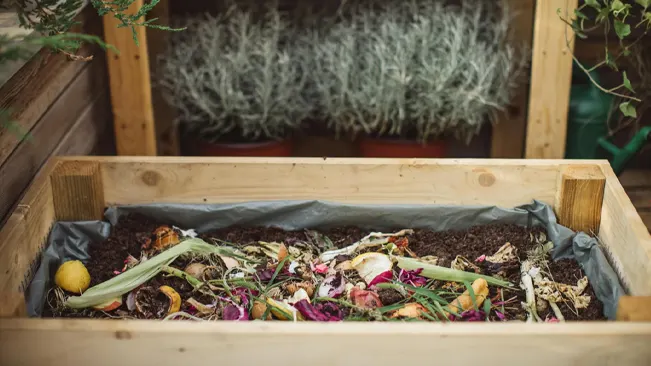
The practice integrates seamlessly into daily life, with kitchen scraps collected for composting, and a mindful selection of compostable materials to maintain balance and avoid pests. The system’s success is marked by an odorless compost and active worms, highlighting the need for ongoing care, especially in colder climates. This simplified guide underscores the commitment to environmental conservation through indoor composting, offering both a practical waste management solution and a rewarding educational experience in organic decomposition.
Equipment For Indoor Composting
Composting Container

The composting container, typically a plastic box,plastic bucket serves as the primary vessel for the composting process. The importance of a tight seal cannot be overstated; it is essential for containing any potential odors and creating an ideal environment for decomposition. Choosing a secondhand container can be a sustainable and cost-effective strategy, aligning with the eco-friendly ethos of composting. The size of the container should be appropriate for the amount of organic waste generated, ensuring enough space for the compost to aerate and decompose properly.
Ventilation System (Optional)
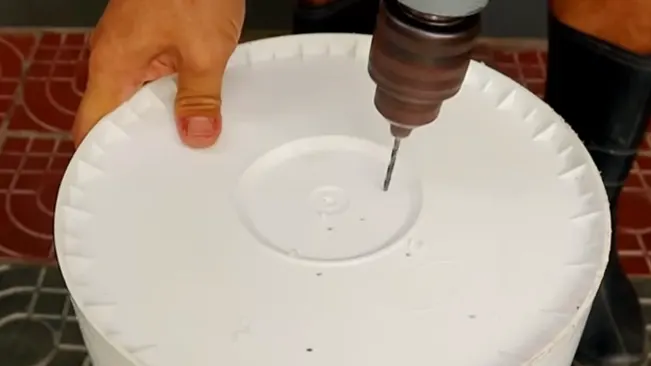
A ventilation system is a valuable addition to indoor compost bins, especially those specifically designed for this purpose. Proper air circulation is crucial for aerobic composting, facilitating the breakdown of organic material by aerobic bacteria. Ventilation helps in maintaining a balanced environment within the compost bin, preventing anaerobic conditions that can lead to foul odors. Some composting containers come equipped with built-in ventilation systems, including holes or vents, to ensure consistent airflow without letting odors escape.
Drainage System (Optional)

The inclusion of a drainage system in the composting setup can significantly enhance the composting process by preventing excess moisture buildup. A compost that is too wet can turn anaerobic, leading to unpleasant odors and a slower decomposition process. A drainage system allows for the excess liquid, often produced from the breakdown of food scraps, to be collected or drained away, maintaining the ideal moisture level for composting. This feature is particularly useful in balancing the moisture content when a large volume of wet materials, like fruits and vegetables, are added to the compost.
Soil
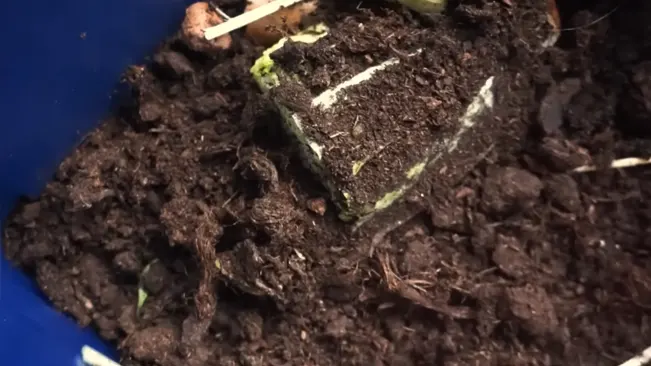
Starting the compost pile with a layer of soil acts as a foundation, introducing beneficial microorganisms and providing a medium for the composting process to commence. The soil helps to anchor the compost, absorb excess moisture, and facilitate the breakdown of organic materials by providing a habitat for decomposers. The choice of soil can vary, but it should be free from chemicals and pesticides to ensure a healthy composting environment.
Cardboard and Newspaper

Cardboard and newspaper are excellent sources of carbon, an essential element in the composting process. They help to balance the nitrogen-rich kitchen scraps, creating a more balanced compost mixture. These materials also play a crucial role in moisture management within the compost bin, absorbing excess liquid and preventing the compost from becoming too soggy. Shredding or tearing these materials into smaller pieces can accelerate their decomposition and integrate more seamlessly into the compost.
Kitchen Scraps Collector
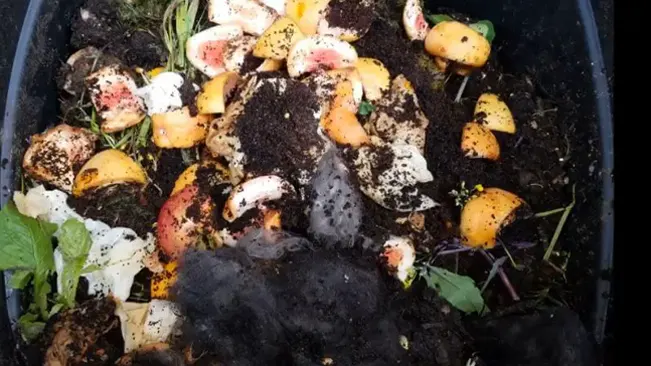
A dedicated container for collecting kitchen scraps simplifies the composting process by minimizing the frequency of trips to the compost bin. Placing a small bowl or container in a convenient location, like the windowsill or countertop, encourages the collection of compostable materials throughout the day. This habit not only makes composting more manageable but also helps in segregating waste at the source, facilitating a smoother transition of kitchen waste into the compost bin.
How do I Compost?
Selecting the Right Container
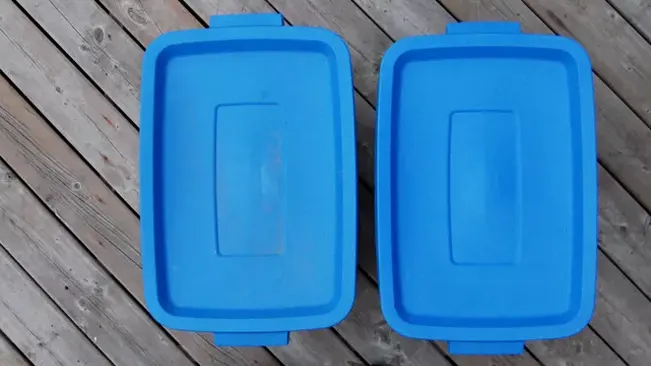
Choosing the appropriate container is crucial for successful indoor composting. A plastic bin with a tight-fitting lid is ideal as it contains the compost material and prevents any potential odors from escaping into your living space. The size of the bin should correspond to the amount of organic waste you typically generate and the space available in your home. It’s important to ensure that the lid seals well to maintain the right conditions inside the bin and to keep pests out.
Setting Up Your Compost Bin
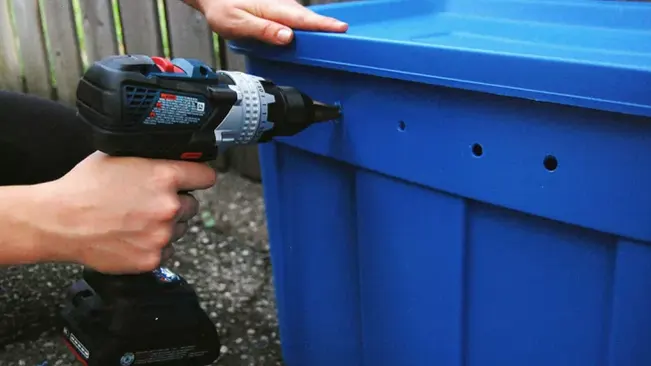
Preparing your bin correctly lays the foundation for effective composting. If your chosen bin doesn’t come with a drainage system, drilling small holes at the bottom can facilitate the drainage of excess moisture, which is crucial to prevent the compost from becoming waterlogged and smelly. Placing a tray or another container beneath the bin will catch this “compost tea,” a nutrient-rich liquid that can be diluted with water and used to feed plants. Starting with a layer of soil in the bin introduces microorganisms essential for breaking down the compost materials, kickstarting the composting process.
Balancing Greens and Browns
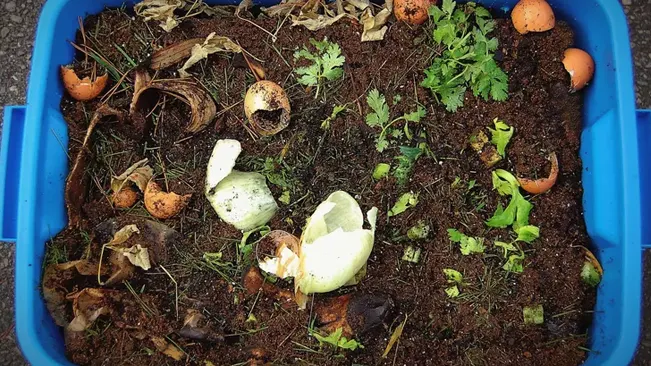
Achieving the right mix of greens and browns is fundamental to composting. Greens, such as kitchen scraps from fruits and vegetables, provide nitrogen, while browns, like shredded newspaper, dry leaves, or pieces of cardboard, supply carbon. This balance is essential for maintaining an environment conducive to decomposition. It helps regulate moisture levels and ensures that microorganisms in the compost have the right mix of nutrients to thrive and work efficiently.
Adding Worms (Optional)
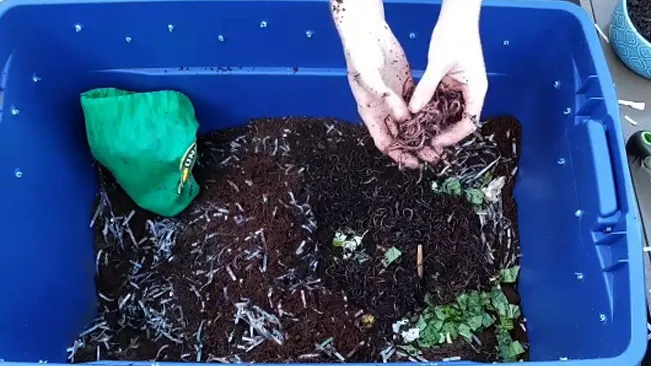
Introducing red wiggler worms to your compost bin can significantly accelerate the composting process. These worms are voracious decomposers of organic material, turning scraps into compost more quickly than microbial action alone. However, it’s vital to ensure that the compost environment is suitable for them, which means excluding materials like meat, dairy, and oily foods that can create toxic conditions for the worms.
Maintaining Your Compost
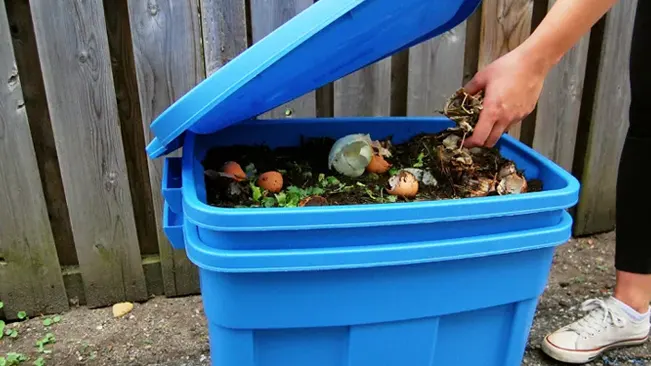
Regular maintenance is key to a healthy composting system. Aerating the compost by turning it periodically introduces oxygen, which is necessary for aerobic decomposition and helps prevent unpleasant odors. Monitoring the moisture level is also important; the compost should feel like a wrung-out sponge, moist but not dripping wet. Adding kitchen scraps should be a careful process, with larger items chopped to speed up decomposition and a continuous balance maintained between green and brown materials.
Harvesting Your Compost
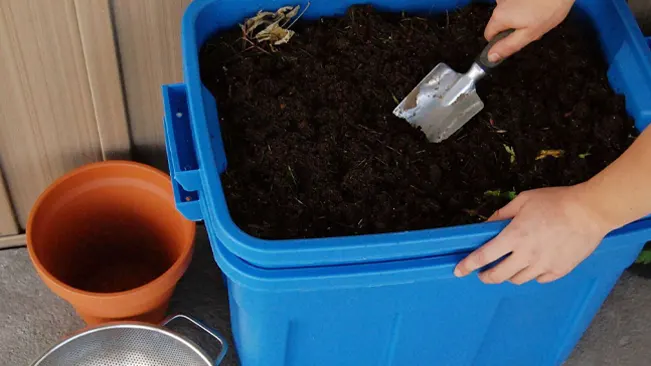
The final stage of composting is the reward for your efforts: the production of rich, dark compost. The time it takes to reach this stage can vary widely depending on factors like the balance of materials, temperature, and the presence of composting worms. When the compost appears crumbly and smells earthy, it’s ready to be used to enrich the soil in houseplants or outdoor gardens, completing the cycle of waste being transformed into a valuable resource for plant growth.
Benefits of Composting
Composting offers significant environmental and gardening benefits, transforming organic waste into a valuable resource while mitigating negative impacts on the planet. By diverting waste from landfills, composting reduces methane emissions, a major contributor to climate change, and lessens the reliance on chemical fertilizers by enriching the soil with essential nutrients. This natural process improves soil health, enhancing its structure, texture, and water retention capabilities, which in turn supports healthier plant growth and increases yield in gardens. Additionally, the use of compost as a natural fertilizer and pesticide promotes a more balanced and disease-resistant garden ecosystem, saving money on garden inputs and fostering a more sustainable approach to gardening and waste management.
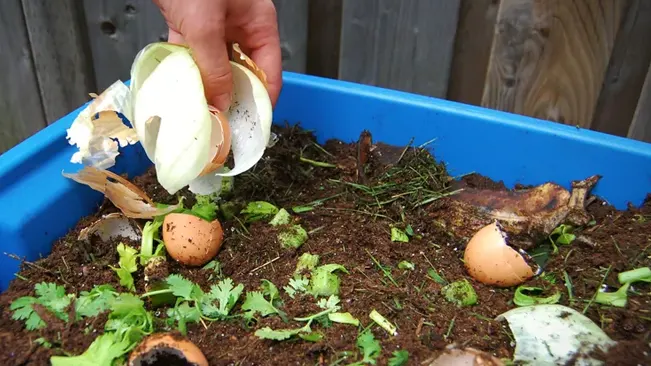
Beyond its environmental and practical gardening advantages, composting holds significant educational and community value. It serves as an excellent tool to educate individuals of all ages about the natural cycle of life, the importance of recycling, and the science behind decomposition. Community composting initiatives can strengthen communal bonds by bringing people together in a shared effort to care for their local environment. Furthermore, composting embodies the principles of a circular economy by recycling nutrients back into the ecosystem, conserving resources, and reducing the need for frequent watering through its ability to help soil retain moisture, thereby contributing to a more sustainable and resource-efficient world.
Troubleshooting Common Issues
Dealing with odors in your compost is a common challenge that usually indicates an imbalance in the composting materials or a lack of proper aeration. A surplus of greens, or nitrogen-rich materials like kitchen scraps, can cause your compost to become too wet and compacted, leading to anaerobic conditions that produce unpleasant smells. To rectify this, you can add more browns, such as dried leaves, shredded paper, or straw, to absorb excess moisture and reintroduce air into the pile. Regularly turning or stirring your compost also helps by mixing the materials and introducing oxygen, which is crucial for aerobic decomposition and odor control.

Pests, such as rodents and insects, can be attracted to your compost bin if it is not properly managed. An open or unsecured bin is an invitation for pests looking for food. To prevent this, ensure your compost bin has a tight-fitting lid and is made of durable material. Avoid adding materials like meat, dairy, and oily foods, which are more likely to attract pests and cause odors. If pests become a problem, consider placing a wire mesh under your bin to deter burrowing animals. For slow decomposition, the issue often lies in the compost’s moisture level, aeration, or the balance of materials being composted. If the compost is too dry, microbial activity slows down, hindering the decomposition process. Adding water to maintain a consistent moisture level similar to a wrung-out sponge can help. Conversely, if the compost is too wet, adding more browns can absorb the excess moisture and restore balance. Ensuring that your compost is well-aerated by turning it regularly is also key to maintaining an active and healthy composting process.
Conclusion
In conclusion, successful composting requires attention to the balance of materials, adequate aeration, and proper moisture levels to create a conducive environment for organic decomposition. By addressing common issues such as odors, pests, and slow decomposition with practical solutions like balancing greens with browns, securing the compost bin, and regularly turning the compost, one can maintain an efficient and odor-free composting system. These practices not only facilitate the transformation of kitchen and garden waste into nutrient-rich compost but also contribute to environmental sustainability by reducing landfill waste and the need for chemical fertilizers. With a little effort and mindfulness, composting can become an integral and rewarding part of household waste management and gardening.
FAQs
1. What can I put in my compost bin?
You can compost fruit and vegetable scraps, coffee grounds, tea bags, eggshells, yard trimmings, shredded newspaper, cardboard, and other organic, non-meat materials.
2. What should I not compost?
Avoid composting meat, dairy, oils, diseased plants, and pet wastes as they can create odor problems, attract pests, and potentially spread pathogens.
3. Why does my compost smell bad?
Bad odors usually arise from too much moisture, lack of aeration, or an imbalance between green (nitrogen-rich) and brown (carbon-rich) materials. Adjusting these factors can eliminate the smell.
4. How often should I turn my compost?
Aim to turn your compost every 1-2 weeks to introduce oxygen, which is essential for the aerobic decomposition process.
5. Can I compost in an apartment?
Yes, you can use a small, sealed compost bin and opt for a worm composting system (vermicomposting) or bokashi composting, both of which are suitable for indoor use.
6. How long does it take for compost to be ready?
Compost can be ready in as little as a few months, but the timeline can vary based on factors like temperature, moisture, material balance, and how often the compost is turned.
7. How do I know when my compost is ready to use?
Finished compost will be dark, crumbly, and have an earthy smell. You should not be able to recognize any of the original materials.
8. Can I compost bread and pasta?
While technically compostable, bread, pasta, and other cooked foods can attract pests. It’s best to avoid composting these if pest management is a concern.
9. Do I need special equipment to start composting?
No, you can start with a simple bin or pile. However, specialized bins can make the process easier and more efficient, especially in limited spaces.
10. Can composting help reduce my carbon footprint?
Absolutely. Composting diverts waste from landfills, where it would release methane, a potent greenhouse gas, as it decomposes anaerobically.

Joel Cunningham
Forestry AuthorI'm Joel Cunningham, an expert in pruning and weed management with over a decade of experience. My skills are rooted in formal training and extensive practice, focusing on advanced pruning techniques and efficient weed control. I'm known for my quality work, precision, and deep understanding of plant health and soil dynamics. My contributions extend to educational initiatives where I share sustainable practices and advice, establishing myself as a reliable and authoritative figure in the gardening community.


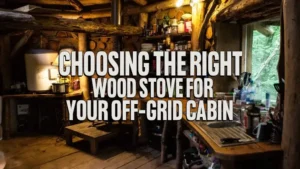
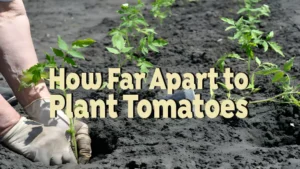
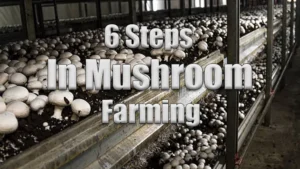

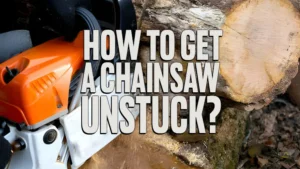

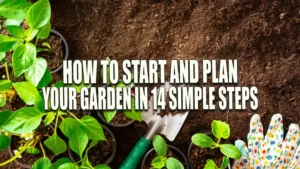

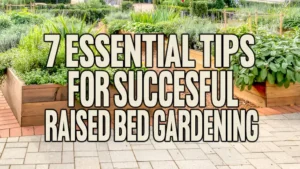
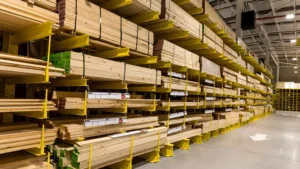

Leave your comment